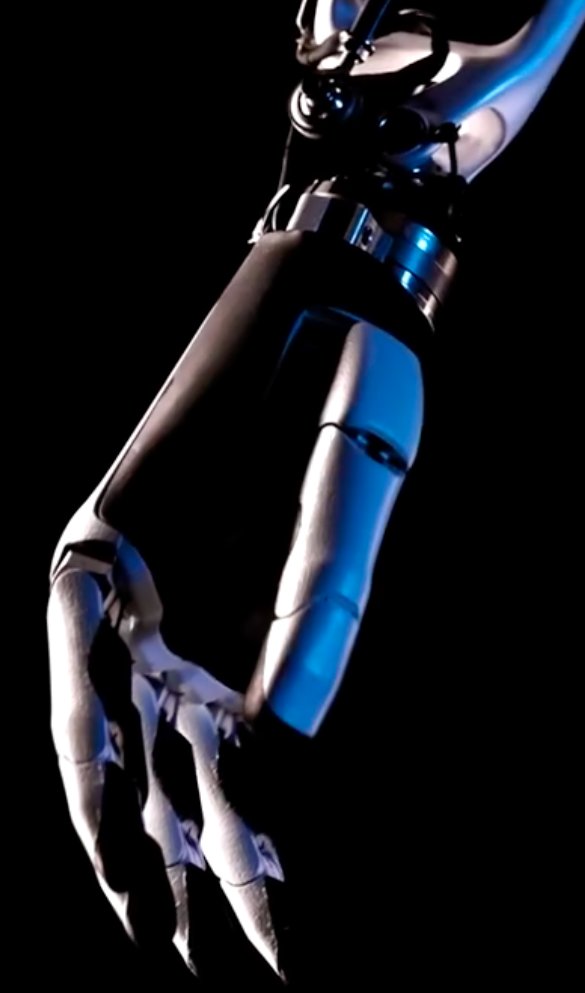Future Economy: The Rise of Humanoid Robots and the Reshaping of Industries
The future of work is here, and it's humanoid. No longer a futuristic fantasy, humanoid robots are rapidly transitioning from science fiction to everyday reality, poised to revolutionize numerous industries and reshape the global economy. This isn't about robots replacing humans entirely, but rather about a collaborative future where humans and robots work together to achieve unprecedented levels of efficiency and innovation. This article explores the burgeoning field of humanoid robotics and its profound implications for the future economy.
The Expanding Capabilities of Humanoid Robots
Humanoid robots are becoming increasingly sophisticated, exhibiting capabilities that were once considered science fiction. Recent advancements in artificial intelligence (AI), machine learning (ML), and sensor technology have enabled these robots to:
- Perform complex tasks: From delicate surgery to intricate assembly line work, humanoid robots are demonstrating the ability to perform tasks requiring dexterity, precision, and adaptability.
- Interact naturally with humans: Improved AI and natural language processing (NLP) are allowing for more seamless human-robot interaction, fostering collaboration and reducing the learning curve for human workers.
- Adapt to dynamic environments: Equipped with advanced sensors and AI-powered decision-making systems, these robots can navigate and respond to unpredictable situations, making them suitable for a wider range of applications.
- Learn and improve over time: Machine learning algorithms allow humanoid robots to continuously learn from experience, improving their performance and efficiency over time.
Industries Poised for Disruption
The impact of humanoid robots extends across various sectors:
- Manufacturing: Automating repetitive and dangerous tasks, leading to increased productivity and improved worker safety. (See related article: The Future of Manufacturing: Automation and the Human Element)
- Healthcare: Assisting surgeons, providing patient care, and delivering medication, enhancing the quality and efficiency of healthcare services.
- Logistics and Warehousing: Streamlining operations, improving order fulfillment, and reducing labor costs.
- Customer Service: Providing personalized assistance in retail settings, answering customer inquiries, and offering product demonstrations.
- Construction: Performing physically demanding tasks, improving safety standards, and accelerating project completion times.
The Economic Implications: Jobs, Growth, and Challenges
The rise of humanoid robots presents both opportunities and challenges for the economy:
Opportunities:
- Increased productivity and efficiency: Leading to economic growth and improved competitiveness.
- Creation of new jobs: While some jobs may be displaced, new roles will emerge in areas such as robot design, maintenance, and programming.
- Improved worker safety: Reducing workplace injuries and fatalities in hazardous environments.
- Enhanced quality of life: Through improved healthcare, personalized services, and increased efficiency.
Challenges:
- Job displacement: The automation of certain tasks may lead to job losses in specific industries, requiring reskilling and upskilling initiatives.
- Ethical considerations: Issues surrounding AI safety, bias in algorithms, and the potential misuse of humanoid robots need careful consideration.
- Economic inequality: The benefits of automation may not be evenly distributed, potentially exacerbating existing inequalities.
- High initial investment costs: The cost of implementing humanoid robots can be substantial, posing a barrier for smaller businesses.
Navigating the Future: A Collaborative Approach
Successfully integrating humanoid robots into the economy requires a proactive and collaborative approach:
- Investing in education and training: Preparing the workforce for the jobs of the future through reskilling and upskilling programs.
- Developing ethical guidelines and regulations: Ensuring responsible development and deployment of humanoid robots.
- Fostering public dialogue and awareness: Addressing concerns and misconceptions surrounding the impact of automation.
- Promoting innovation and entrepreneurship: Supporting the development of new technologies and applications for humanoid robots.
The rise of humanoid robots marks a significant turning point in economic history. By embracing a collaborative and forward-thinking approach, we can harness the transformative power of this technology to create a more prosperous and equitable future for all. Stay informed about the latest developments in the field of robotics and AI to navigate this exciting new era. .
